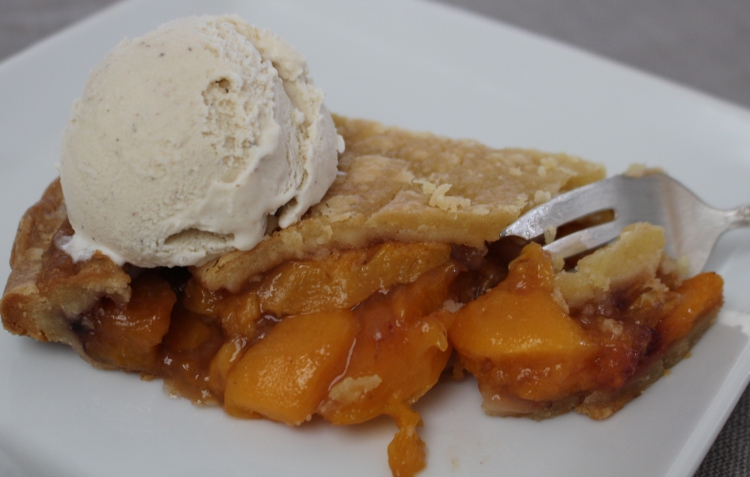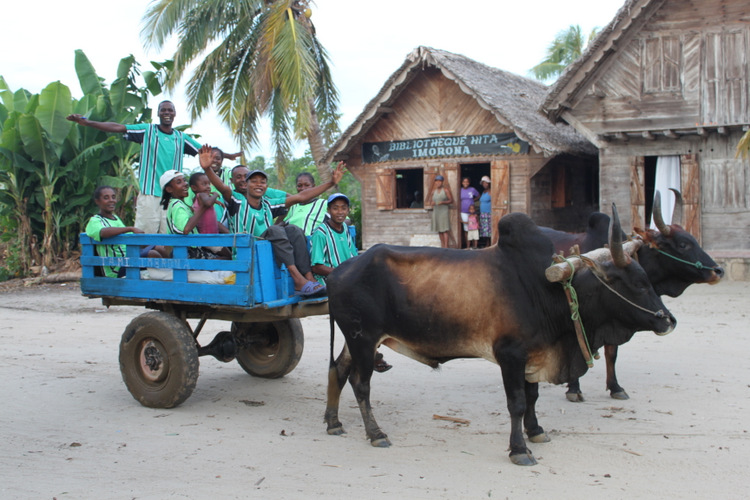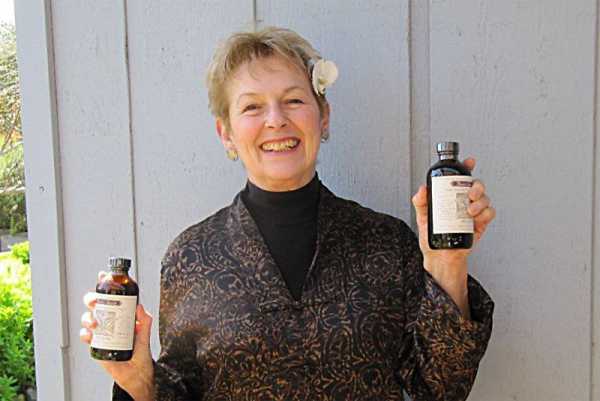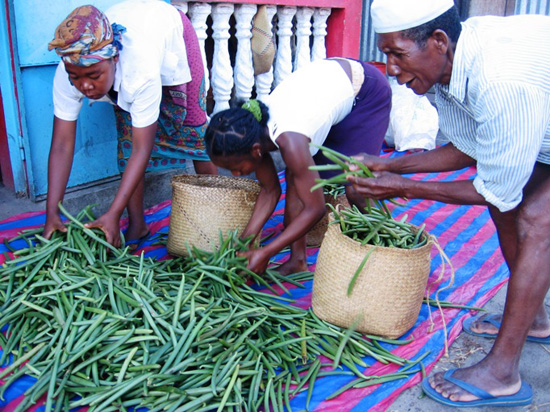
I'm amazed at how superior your vanilla is!
– Des, The Grommet
 In 2013 I was contacted by the National University of Costa Rica to speak at a round-table conference on vanilla in 2016. I was both honored and excited by the prospects of returning to Costa Rica after 52 years (which sounds impossible, but it’s true).
In 2013 I was contacted by the National University of Costa Rica to speak at a round-table conference on vanilla in 2016. I was both honored and excited by the prospects of returning to Costa Rica after 52 years (which sounds impossible, but it’s true).
I lived in Guatemala for about eight months in 1963/64 and traveled to most of the Central American countries with my father, who was working on a project with the Organization of American States.
We flew into the capital, San Jose, when the volcano Irazu was erupting. I remember very clearly the pilot announcing, “We are close to the volcano Irazu so we’ll circle it so you have a better view.” The pilot then banked around the volcano, which was spewing a huge plume of ash as well as rocks and boulders. It was both astonishing and frightening to see an erupting volcano from this vantage point, and I was relieved when the pilot returned to our intended flight path, though I forever have the images imprinted in my mind.
On the ground, it was a different situation. The air was so polluted with ash that I needed a mask to breathe. We quickly realized that I would not do well to stay in the Capital (I’m asthmatic), so we headed to the Pacific Coast for the remainder of our time there.
This trip I hope to see the museums in San Jose. The conference is being held at an agricultural station in the province of San Carlos, near the dormant (!) volcano Arenal. We will be in the heart of the jungle, an area with hot springs and farms tucked throughout the region, which is very hot and humid.
It occurred to me that you might find my presentation interesting as I’m featuring six farms. The model of small farms with only one revenue stream still exists, but another model has emerged that bears paying attention to if farmers are to survive in our changing global economy. This model is especially useful for Costa Rica as eco-tourism is a booming industry and visitors are very interested in learning more about foods, farms and how crops are grown and processed. It is also critical for farmers to have more than one revenue stream as the international vanilla market is unstable and, often the farmers do 90 percent of the work for 10 percent of the profits. As vanilla also is the only one of the three luxury commodities – – coffee, chocolate and vanilla — that has viable imitations, it’s critical for the survival of pure vanilla that growers incorporate more effective ways of supporting themselves and their families.
Here are the six farms I am using for my presentation. I’ve chosen some fun photos for this blog provided by the farms I’m representing. Anne Reynolds, whom I have known via my site since 2005 will be representing the seventh model, a community in Northwestern Haiti where she raised the funds for a school, the first ever in this poor region. I assisted Anne by connecting her with a biologist and vanilla producer, now deceased, who brought cacao and vanilla cuttings and helped the community get the plants started. Now, over 650 families who never had an income are proud growers of cacao and vanilla.
LaFaza was started by a group of five Peace Corps workers assisting a village outside of Maranara in Southern Madagascar. Traditionally, the vanilla industry was in northern Madagascar, but increasingly it has spread south. When Nathaniel and Sarah Delafield arrived at the village where they were assigned, the farmers told them that they grew vanilla and wanted to start selling to the international market. Nathaniel and Sarah knew nothing about vanilla and considered asking for a transfer to another region or country when they next went to the city. Before asking for a new assignment, they went online and discovered my company, which at the time, was on vanilla.com. Much to my surprise (I learned about this in January of this year), my site was their inspiration and primary resource for how to move forward. They created a model based on my work of providing information and support for growers to produce sustainably-grown vanilla and receive fair wages for their work. Over time, they have created a strong community that also grows a variety of crops to sell nationally, regionally and locally. They also assisted other villages to start collectives throughout the region. The farmers are thriving. The boys in the cart pulled by Zebu cattle at the top is from La Faza. The second picture here shows some of the agro-ecology practiced by the local growers. Pretty area, isn’t it?
Natural Extracts Industries, Ltd. was started in 2010 after Juan Guardado visited and fell in love with Tanzania. Juan spent a lot of his youth in the developing world and wanted to create a business model that could help lift up communities and benefit the country as a whole. Vanilla is a crop that grows well in East Africa, so he started a value-added business making vanilla extract and flavors. There have been many challenges with the bureaucracy for getting the necessary permits but he has pushed on and now has a healthy, growing business.
In 2014 I was approached by the Tanzanian government, asking for a referral to someone who could train vanilla growers. I referred them to my Internet friend, Henry Karczyinski, who has been a vanilla grower for 30 years. It turns out that Henry went to train Juan, whom I already knew, through the Internet, as well as other local growers. Now there are over 200 farmers growing vanilla and selling their beans to Juan as well as 12 staff members working at his company. I connected a Ugandan friend who created Vita-Plus, a fairly-traded women’s collective of vanilla growers last year. Juan shared what he learned from Henry and Kenneth’s group is now also providing vanilla for Juan’s company.
The photo of Mt. Kilimanjaro is special because the water used by the farm comes from Lake Kiliminjaro and the farm itself is located at over 4000 feet, unique for growing vanilla at such a high altitude.
Manuata Martin came to Los Angeles from Tahiti with the dream of becoming a filmmaker. He attended UCLA and had just started looking for work in the film industry when his brother Sacha, in Tahiti, called and asked if he could help sell the vanilla his farmer friends were growing. Manuata decided to give it a try. It was a slow learning curve as Tahiti is a French protectorate using the Euro so Tahitian vanilla is considerably more expensive than the more common Bourbon vanilla. However, the vanilla grew in popularity and Tahitian Gold has grown dramatically, enough so that Sacha has started his own plantation.
In addition to selling vanilla from Tahiti, Manuata also sells pure noni juice, made from a rather pungent (to say the least) fruit that has many medicinal properties. Manu’s model includes supporting Tahitian farmers by expanding their market in the US and giving back to his native country by providing a reliable revenue source for the farmers. His goal is to help expand the shrinking industry by offering assistance and special incentives for farms so they will continue to grow Tahitian beans.
I love this photo of the noni farmers. Manuata is on the right. It’s so Tahitian that I had to share it.
Jim and Tracy Reddekopp wanted to home school their children on the Big Island of Hawaii. When they spoke to Tom Kadaoka, a professor at the University of Hawaii, about the possibility of growing vanilla, he said, “You want to grow vanilla? Then here, read this book!” The book? The Vanilla Cookbook (out of print), published by Celestial Arts in 1985. My passion (and education) was Cultural Anthropology, so when I wrote the book, I included information on the history of vanilla. Much to my shock I have been told over and over again how this simple book became the inspiration for many farmers in a number of countries!
Jim and Tracy bought an old coffee mill and turned it into a destination point in the Hamakua Valley on the Big Island. Cruise ships sailing into Hilo bus people to their plantation in rural Pailua for a tour of their vanilla plantation and a full meal created around vanilla as well as a lecture on using vanilla. Their children grew up as the wait staff and worked on the farm or in the kitchen and have a strong stake in the company. The family also creates value-added products to sell to visitors. I wish I had a photo of the family together eight years ago when I stayed at their farm. The young man in the green plaid shirt was six years old. The kids all dressed in shirts and ties and seated and served the visitors. The daughter informed me that her older brother (now married and with his pregnant wife in the photo) was definitely older but she was more mature. (I think she was 13 at the time.) If you’re going to Hawaii, you definitely want to visit The Hawaiian Vanilla Company! You will have a wonderful time.
Australia seems an unlikely place to find vanilla, but Tropical North Queensland in Northeast Australia, has several vanilla farms. Broken Nose Vanilla is located in Mirriwini, famous as the village with the greatest rainfall in Australia. It has thrived under the watchful and competent hands of Matt Allen and Fiona George and their daughter Billie and even survived a direct hit from two cyclones. Located an hour from Cairns, the region has a special route called Taste of Paradise, where visitors can tour from farm to farm. The growers additionally put on special events and fairs that are well attended and Fiona has created a line of value-added products as well. She has also been very involved in the country’s agricultural community and their farm, her products and the work she has done for the region have all earned awards. If you are fortunately enough to visit the Great Barrier Reef or are in the area of either Cairns or Brisbane, I highly recommend a visit to Broken Nose Vanilla. Isn’t this a great shot of the family dog helping out?
Finally, I will have the opportunity to personally meet Henry Karczyinski, whom I’ve known for at least twelve years via my Web presence. Henry was also a Peace Corps worker who later settled with his family on a farm in Costa Rica in the Quepos region on the Pacific Coast side. Villa Vanilla is a tropical laboratory for sustainable agriculture production and eco-tourism, and includes two cottages where guests may stay while enjoying the regional beauty. In addition to growing vanilla, he also grows cacao and produces cocoa, Ceylon (true) cinnamon, black and white pepper, allspice, cocoa, cardamom, turmeric Tulsi (holy basil), oregano, bay leaves and cloves. After the conference I will spend time on their farm.
It has been an honor and a gift to be connected with farms and projects in diverse regions around the world and to see vanilla thriving in ways that will hopefully keep pure vanilla alive for generations to come. I look forward to watching these and other farms make that possible.
I was given a small bottle of Rain’s Choice in a gift basket and I have been hooked ever since. The flavor makes all of my baking so much better! I will never use grocery store vanilla again!


© 2021. All Rights Reserved
Designed/Developed by Kat & Mouse